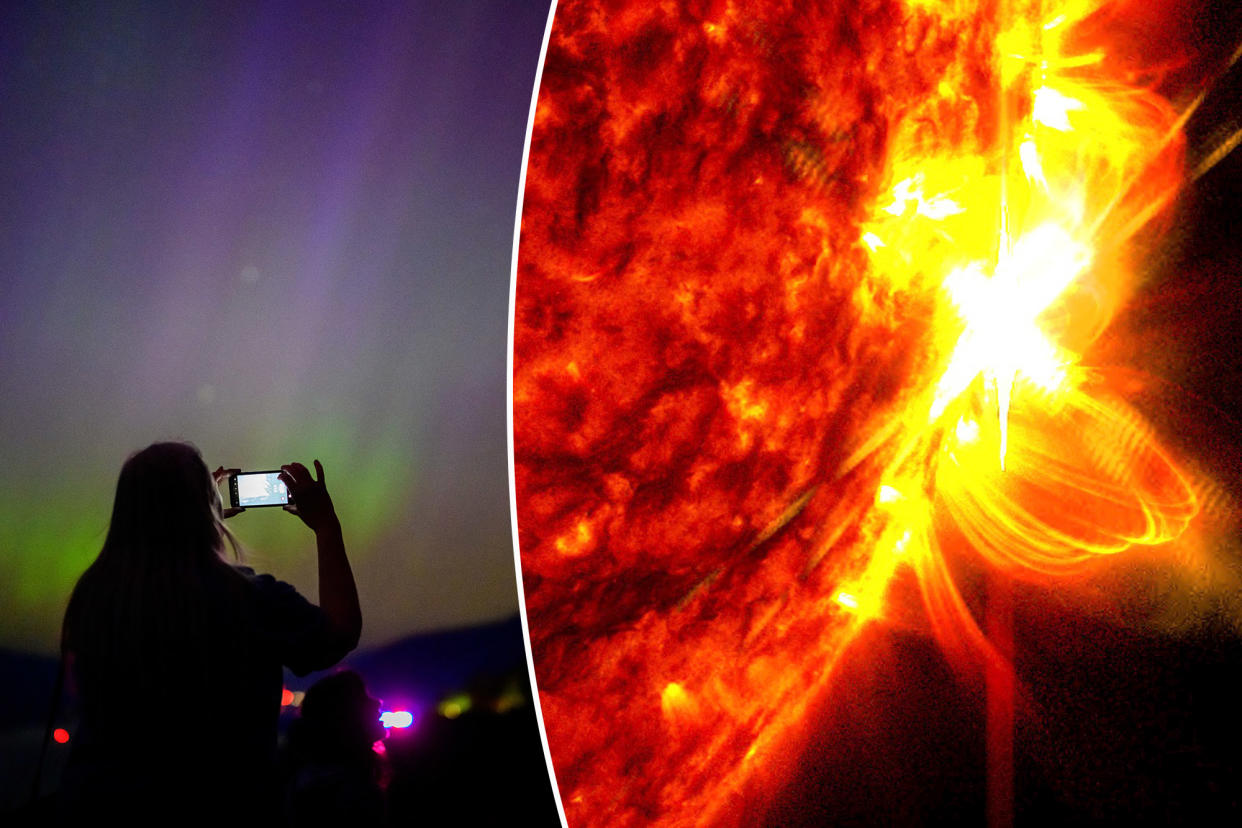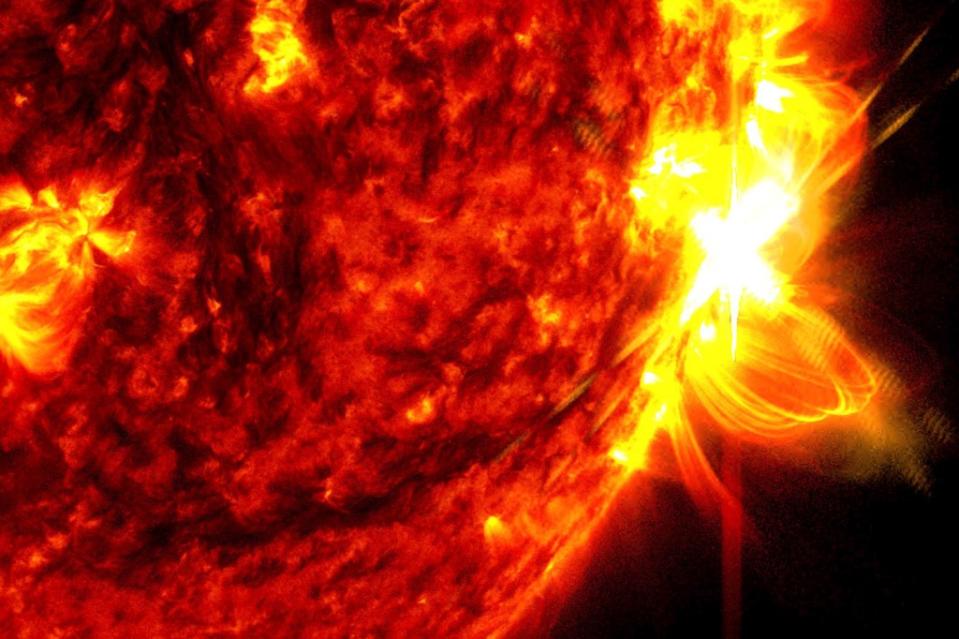Another powerful solar storm could be headed our way — bringing blackouts, auroras and more

Future’s so bright, gotta wear shades.
The sunspot responsible for generating the strongest magnetic storm in two decades is returning with a vengeance this week, meaning that Earth could potentially experience blackouts — but also more northern lights, or aurora borealis.
The cluster, dubbed AR3664, marked its return with a solar flare that erupted from the Southeastern limb of the Sun, Spaceweather.com reported.
![“As soon as the sunspot starts to appear, we will enter the window of opportunity [for viewing auroras],” said solar physicist Ryan French. Getty Images](https://s.yimg.com/ny/api/res/1.2/yWU_EtgEYYljHj90cG5PMg--/YXBwaWQ9aGlnaGxhbmRlcjt3PTk2MDtoPTE0Mzk-/https://media.zenfs.com/en/ny_post_articles_869/e76ff916f625548f4e3c84623e29df33)
This particular sunburst was a class X2.8 — the most powerful variety that the Sun is capable of producing — making it one of the most intense solar events in recent years.
The event interrupted shortwave radio and triggered a coronal mass ejection, in which plasma and magnetic particles exploded from the sun’s surface. Fortunately, the CME will not impact the Earth.
That being said, we’re not entirely safe from this geomagnetic shrapnel. When AR3664 was facing the Earth earlier this month, it generated a solar storm with a G5 rating — the highest level on the geomagnetic storm scale.
Now, as the sun cluster turns toward us again — it will be fully Earth-facing during the new moon on June 6 — it could generate another interstellar tempest should particles continue to erupt from the planet’s surface.

This appears likely given that last week, AR3664 popped off an X12-class solar flare — its biggest yet.
This starburst caused a huge coronal mass ejection to erupt on the side of the Sun facing away from us, Ryan French, a solar physicist at the National Solar Observatory in Boulder, Colorado, wrote on X.
Meanwhile, according to the National Oceanic and Atmospheric Administration, the geomagnetic projectiles released from the sun this week won’t reach us for a while due to their remote origin point.
“As soon as the sunspot starts to appear, we will enter the window of opportunity [for viewing auroras],” said French.
If they do occur, they will be most visible in the nights before and after June 6.

